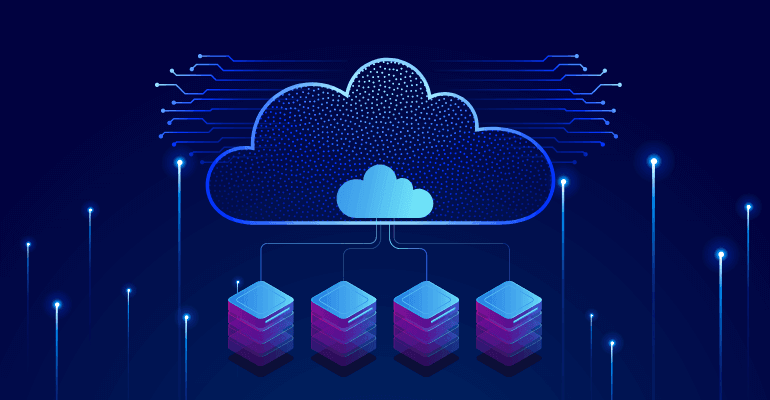Imagine a business that has run on the same on-premises database for over a decade. The hum of server fans in the company’s small data center has been the background music of daily operations. Rows of blinking LEDs are the heartbeat of its customer records, product catalogs, financial systems, and analytics dashboards.
But the world is moving faster now. Customers expect 24/7 access, global performance, and features that stretch the limits of what those local servers can provide. Competitors are already in the cloud, scaling up for holiday surges and scaling down when demand dips. The writing is on the wall: migration to the cloud isn’t just an IT project anymore — it’s a business survival strategy.
Yet database migration isn’t a mere file transfer. It’s surgery on the beating heart of an organization’s information systems — one where downtime, data loss, or performance issues can cost far more than the project’s budget. Done right, it can unlock agility, resilience, and new possibilities. Done wrong, it can cripple a company’s operations.
This is the world of database cloud migration — a process that blends technology, planning, and a surprising amount of human coordination.
Understanding the Cloud as a Destination
Before thinking about how to move a database, it’s essential to understand what “the cloud” truly means in this context. It is not some abstract, magical place where data floats; it’s a distributed network of powerful servers, services, and software infrastructure, maintained by providers like Amazon Web Services (AWS), Microsoft Azure, Google Cloud Platform (GCP), and others.
For databases, the cloud can take different forms. A company might migrate to a Database-as-a-Service (DBaaS) offering, where the provider handles maintenance, scaling, and backups, leaving the business free to focus on application logic. Alternatively, the migration might simply move the same database software from an on-premises data center to virtual machines in the cloud — a so-called “lift-and-shift” approach.
Understanding the type of cloud environment — public, private, hybrid, or multi-cloud — sets the tone for the migration strategy. The choice influences costs, compliance requirements, scalability, and even the tools that will be viable.
The First Step: Clarity of Purpose
No migration should begin without a crystal-clear understanding of why the move is happening. This is not just about “modernizing” or “keeping up with trends.” The goals must be concrete: perhaps reducing operational costs, improving scalability, achieving higher availability, or enabling global data access.
At this stage, conversations between IT leadership, database administrators, application developers, compliance officers, and business executives are critical. Each group sees the database differently — as a technical component, a compliance risk, a performance bottleneck, or a treasure trove of analytics potential. Aligning on purpose ensures that when tough decisions come later — like whether to re-architect a schema or how much downtime is acceptable — everyone is guided by the same north star.
Assessing the Terrain Before the Move
Just as a hiker studies a map before crossing mountains, a migration team must assess the current database environment in meticulous detail. What database engine is in use — MySQL, PostgreSQL, Oracle, SQL Server, MongoDB? How large is the dataset? How complex are the stored procedures, triggers, and indexes? Are there application dependencies that expect the database to behave in very specific ways?
This assessment also covers the state of the data itself. Legacy databases often harbor inconsistencies, duplicate records, or unused tables. Migrating without cleaning up can mean paying for storage of junk data — and worse, carrying hidden problems into the new environment where they may become harder to untangle.
A deep inventory of database objects, data quality, performance characteristics, and interdependencies provides the foundation for planning. It also surfaces potential pitfalls early, such as proprietary features that the target cloud database might not support.
Choosing a Migration Approach
Once the current landscape is clear, the migration team must decide how to cross from “here” to “there.” Broadly speaking, migrations fall into categories that range from lift-and-shift to full re-architecture.
A lift-and-shift approach moves the database as it is, often into virtual machines in the cloud. It’s the fastest path and usually involves minimal changes to applications, but it might not take full advantage of cloud-native features like auto-scaling or serverless execution.
On the other end of the spectrum, a re-architecture rebuilds the database on a different engine or structure, often moving from a monolithic relational model to distributed, cloud-native databases. This can unlock dramatic performance improvements, but it demands more time, more testing, and deeper changes to application code.
Between these extremes lies the hybrid approach, where parts of the system remain on-premises while others move to the cloud, or where an initial lift-and-shift is followed by gradual modernization. The right choice balances business priorities, technical feasibility, and time constraints.
Tools of the Trade
Database migration tools can be as varied as the landscapes they traverse. Some are provided by cloud vendors themselves — AWS Database Migration Service, Azure Database Migration Service, Google Database Migration Service — designed to move data with minimal downtime and built-in compatibility checks.
Others are specialized third-party tools such as Striim, Talend, or Quest SharePlex, which might offer richer transformation capabilities, multi-database support, or advanced monitoring. Open-source options like pg_dump and pg_restore for PostgreSQL or mysqldump for MySQL remain viable for smaller migrations or controlled scenarios.
The choice of tool is not merely about copying data; it’s about orchestrating schema migration, transforming data formats where necessary, validating integrity, and, in some cases, running old and new databases in parallel until the switch-over moment.
The Challenge of Downtime
One of the most delicate topics in any database migration is downtime. Every minute the database is unavailable can mean lost transactions, unhappy customers, or operational paralysis.
Some migrations accept a “big bang” cutover: the old database is shut down, the data is moved, the new database is brought online, and the business resumes. This can work for small datasets or internal systems where downtime is tolerable.
For customer-facing systems, the goal is often near-zero downtime migration. Techniques like change data capture (CDC) continuously replicate changes from the source to the target database during migration, allowing the two to stay in sync until the final cutover. This approach requires more complex tooling and meticulous testing, but it can make the migration nearly invisible to end users.
Testing in the Shadows
No migration should leap from planning to production without extensive testing. A shadow environment — a cloud-based replica of the production database — allows the team to run queries, test application behavior, and simulate workloads without risking the live system.
This testing is not only about performance benchmarks. It’s also about discovering subtle differences in how the new environment handles indexing, transaction isolation, or stored procedure execution. Even small behavioral differences can ripple through an application in unexpected ways.
Load testing under realistic traffic patterns can reveal whether the new database configuration can handle peak loads or whether it needs tuning. In cloud environments, where scaling is possible but not free, testing also helps optimize cost-performance balance.
Security in Transit and at Rest
Migrating to the cloud shifts the security perimeter. Data that once lived entirely within the company’s private network will now traverse public internet routes and rest on infrastructure controlled by a third party.
During migration, encryption in transit is non-negotiable — typically through TLS. Once in the cloud, encryption at rest, access controls, and role-based permissions ensure that data remains protected. Cloud providers offer robust security frameworks, but configuration is key; a misconfigured permission can open the door to breaches just as easily as in an on-premises setup.
Compliance requirements such as GDPR, HIPAA, or PCI DSS can also dictate specific security measures. These must be accounted for in the migration plan, not bolted on afterward.
The Human Factor
Cloud migrations are often framed as purely technical endeavors, but the human factor is equally critical. Database administrators accustomed to tuning on-premises servers must adapt to new paradigms. Developers must learn how to leverage cloud-native database features. Business stakeholders must adjust to different cost models, where storage and compute are billed in granular increments.
Change management, training, and clear communication can make the difference between a smooth adoption and a resistant, skeptical user base.
When Pitfalls Become Sinkholes
Even the best-laid plans encounter turbulence. Network bottlenecks can slow data transfer to a crawl. Differences in SQL dialects can break queries that have worked for years. Latency between cloud regions can surprise architects who assumed the cloud was a uniform environment.
One of the most dangerous pitfalls is underestimating costs. While cloud pricing can be attractive on paper, unoptimized queries, oversized instances, or unnecessary replication can quickly inflate bills. Monitoring and cost governance should be in place from day one, not as an afterthought.
Data loss is the nightmare scenario. Backups and rollback plans are the safety nets. If a migration encounters corruption or a catastrophic failure, the ability to restore the original system quickly can prevent disaster.
The Moment of Cutover
The final switch from the old database to the cloud environment is both exhilarating and nerve-wracking. Teams gather — sometimes physically, sometimes in virtual war rooms — watching dashboards, running validation scripts, checking error logs.
When the cutover goes smoothly, the sense of achievement is electric. The company steps into a new era, its data beating in the heart of the cloud, ready to scale, adapt, and grow.
When it falters, the rehearsed rollback plan comes into play, and the migration team becomes a rescue squad. The best teams are those that see this moment not as a gamble but as the final chapter of a carefully rehearsed play.
Life After Migration
The story doesn’t end when the database is in the cloud. Post-migration monitoring ensures that performance matches expectations and that cost projections hold true. Indexes may need tuning, queries may need optimization, and unused resources may need to be retired.
The cloud offers opportunities for continuous improvement: automated scaling, integration with analytics platforms, disaster recovery across regions, and rapid provisioning of test environments. Organizations that treat migration as the beginning of a new optimization journey, rather than a finish line, reap the greatest rewards.
Why the Cloud Is a Moving Target
Even after a successful migration, the cloud landscape evolves. New services, new pricing models, and new security features appear constantly. A database that is cutting-edge today might feel outdated in three years.
Continuous education, experimentation, and readiness to adapt are the hallmarks of organizations that thrive in the cloud era. Migration is not a one-time event but part of a long-term dance with technology’s rapid pace.
A Transformation Beyond Technology
At its core, migrating a database to the cloud is a transformation of how an organization thinks about data. It shifts the mindset from owning and controlling hardware to orchestrating services in a shared, elastic environment. It changes the economics, the risks, and the possibilities.
When approached with clarity, care, and respect for both technical and human factors, a cloud migration can be more than a project — it can be the beginning of a more resilient, responsive, and innovative future.






